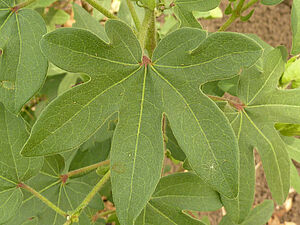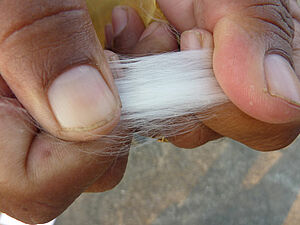For more than 8,000 years, cotton has been used for textile production, and it still remains one of the most important fibre plants worldwide. Cotton is a high-demanding crop that needs a large amount of water and nutrients. At the same time, it attracts many insects. Although only 2.4% of the world’s agricultural land is used for cotton production, around 6% of pesticides and 16% of all insecticides globally are applied to cotton. Around 20 years ago, cotton was genetically modified to include the toxin gene of Bacillus thuringensis. This Bt-gene enables the plant to produce a substance which is toxic to the bollworm and thus, should reduce insecticide usage. Today, more than 70% of the cotton cultivation industry uses genetically modified cotton varieties and continues to rise (www.transgen.de). Nevertheless, insecticides are still applied in cotton cultivation because new pests and diseases, such as jassids, substitute the bollworm. The main cotton cultivating countries are China, India, and the USA.
During recent years, the global demand for organic cotton has increased due to the Swiss label COOP Naturaline and the company Remei but also due to big textile industries such as C&A and H&M. Organic production, with its closed natural cycles and its refraining from synthetic fertilizers and pesticides, is a resource-efficient production system. It enables an environmentally friendly and health-risk-free production that reduces the dependence of smallholder farmers on agrochemical credits. In combination with fair trade, this cultivation technique contributes to a sustainable cotton production by improving income, food security, and rural development. Around three quarters of global organic cotton production is produced on 253’000 hectares in India by around 184’000 smallholder farmers. This area represents around 2% of the overall cotton cultivation area in India (Farm &Fiber Report 2011-12, Textile Exchange).





